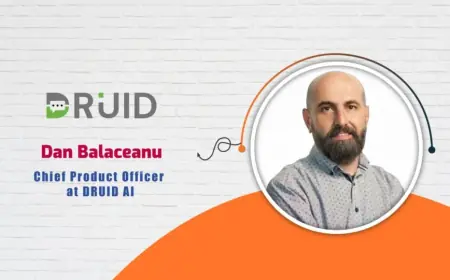Endoscopic Hydrocephalus Surgery: Benefits and Advances in Treatment
Discover the benefits and advancements of Endoscopic Hydrocephalus Surgery, a minimally invasive treatment for hydrocephalus. Learn how this procedure, including **Endoscopic Hydrocephalus Treatment in India**, offers reduced complications, shorter recovery times, and improved long-term outcomes compared to traditional shunt placement. With advancements in technology, patient selection, and robotic-assisted surgery, this treatment is transforming the way hydrocephalus is managed, providing patients with a better quality of life.

Hydrocephalus, often referred to as "water on the brain," is a medical condition characterized by an abnormal buildup of cerebrospinal fluid (CSF) in the ventricles of the brain. This condition can lead to increased pressure within the skull, which may damage brain tissues and affect a person’s ability to function normally. While hydrocephalus can affect individuals of all ages, it is most commonly diagnosed in infants, older adults, and people who have suffered traumatic brain injuries.
Traditionally, hydrocephalus has been treated through the implantation of a shunt, a device that diverts excess fluid from the brain to other parts of the body. However, advancements in medical technology have introduced a more effective, minimally invasive approach known as Endoscopic Hydrocephalus Treatment in India. This treatment utilizes an endoscope, a small tube with a camera, to treat the condition without the need for a shunt.
What Is Endoscopic Hydrocephalus Surgery?
Endoscopic hydrocephalus surgery, or endoscopic third ventriculostomy (ETV), is a minimally invasive procedure that addresses the underlying cause of hydrocephalus by creating a small opening in the floor of the third ventricle of the brain. This opening allows cerebrospinal fluid (CSF) to bypass blocked pathways and drain into the brain’s natural absorption system, effectively reducing the buildup of fluid and alleviating pressure on the brain.
The procedure is performed using an endoscope, a flexible tube with a tiny camera at the end that is inserted into the brain through a small incision in the scalp. The camera helps guide the surgeon as they carefully create the necessary opening to restore the proper flow of CSF. Because of its minimally invasive nature, the procedure typically requires a shorter recovery time and results in fewer complications compared to traditional shunt placement.
Advantages of Endoscopic Hydrocephalus Surgery
Minimally Invasive: One of the biggest advantages of endoscopic hydrocephalus surgery is that it is minimally invasive. Unlike traditional shunt procedures, which require larger incisions and the implantation of a device, the endoscopic technique only requires a small hole and a tiny camera to be inserted into the brain. This reduces the risk of infection, minimizes scarring, and decreases recovery time.
Reduced Risk of Complications: Traditional hydrocephalus treatment with shunts can lead to complications such as infection, mechanical failure, and blockage of the shunt. In some cases, shunts need to be replaced over time due to malfunctions. On the other hand, endoscopic hydrocephalus surgery eliminates the need for a permanent device like a shunt, reducing the risk of these long-term complications. Additionally, ETV eliminates the risk of shunt malfunction, which can often lead to multiple surgeries.
Shorter Hospital Stay: Because the procedure is minimally invasive, patients undergoing endoscopic hydrocephalus treatment often experience a much shorter hospital stay compared to those who undergo traditional shunt implantation. The need for intensive monitoring and care is also reduced, allowing patients to return to their normal lives more quickly.
Improved Quality of Life: Endoscopic hydrocephalus surgery addresses the root cause of hydrocephalus by restoring the natural flow of cerebrospinal fluid. As a result, patients experience significant improvements in symptoms, including relief from headaches, nausea, and cognitive impairments. The restoration of normal brain function helps improve the overall quality of life for patients, with many reporting better cognitive function and physical well-being after the procedure.
Long-Term Effectiveness: Endoscopic hydrocephalus treatment has been shown to offer long-term effectiveness in many patients, especially those with obstructive hydrocephalus. In many cases, the results of the procedure can be permanent, allowing patients to avoid future surgeries or shunt replacements. As a result, patients are able to lead more independent and active lives without the constant worry of complications or the need for ongoing medical interventions.
Minimal Scarring: Due to its minimally invasive nature, endoscopic hydrocephalus surgery results in minimal scarring. The incision is small, and the procedure is performed under local or general anesthesia, ensuring that patients experience less pain and discomfort. This is in contrast to traditional surgeries, which often require larger incisions and can leave more noticeable scars.
Advances in Endoscopic Hydrocephalus Treatment
The field of endoscopic hydrocephalus treatment has made significant strides in recent years, with advances in both surgical techniques and technology. Some of the key advancements include:
Improved Endoscopic Technology
The development of high-definition cameras and advanced endoscopic tools has greatly improved the precision of endoscopic hydrocephalus surgeries. Surgeons now have access to clearer, more detailed images of the brain, which allows for better navigation during the procedure and a higher success rate.
Increased Patient Selection
In the past, endoscopic surgery was primarily reserved for patients with specific types of hydrocephalus, such as obstructive hydrocephalus. However, advancements in technique and patient selection have expanded the range of patients who can benefit from endoscopic treatment. Today, more patients, including those with communicating hydrocephalus, are eligible for the procedure.
Robotics-Assisted Surgery
The advent of robotic-assisted surgery has further enhanced the precision and safety of endoscopic hydrocephalus treatment. Robotic systems allow surgeons to perform even more delicate procedures with greater accuracy, reducing the likelihood of complications and improving overall outcomes.
Improved Training for Surgeons
As the demand for endoscopic hydrocephalus treatment has grown, medical professionals have undergone specialized training to perform the procedure effectively. Surgeons are now better equipped to handle the complexities of endoscopic surgery, ensuring that patients receive the best possible care.
Conclusion
Endoscopic hydrocephalus surgery represents a major advancement in the treatment of hydrocephalus, offering numerous benefits over traditional shunt placement. From reduced risk of complications to shorter recovery times, this minimally invasive approach is transforming the way hydrocephalus is treated. With continued advancements in technology and surgical techniques, endoscopic hydrocephalus treatment is becoming an increasingly viable option for patients worldwide, including those seeking Endoscopic Hydrocephalus Treatment in India. If you or a loved one is struggling with hydrocephalus, endoscopic surgery may provide the relief and long-term results you’ve been looking for.
Also Read:
Top 5 Effective Treatments for Migraine Headaches You Should Know
What's Your Reaction?
 Like
0
Like
0
 Dislike
0
Dislike
0
 Love
0
Love
0
 Funny
0
Funny
0
 Angry
0
Angry
0
 Sad
0
Sad
0
 Wow
0
Wow
0























































